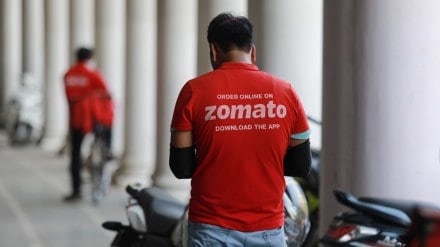Last November the narrative was all about how Zomato was in a soup. About how there were too many top-level exits and layoffs, how the losses were bigger and how Blinkit was bleeding. A year down the line, the pessimism is almost all gone; the chatter now is about how the food delivery app has staged a promising turnaround and is on the road to sustained profitability.
The September quarter numbers are undoubtedly good even if costs are a bit of a dampener. Critically, as analysts have pointed out, the operating losses have narrowed considerably to 47 crore from 311.4 crore in Q2FY23. Adjusted for Esop charges, the Ebitda has turned positive at 85 crore from a loss of 175 crore a year ago. Equally, the higher number of average monthly transacting users (MTU) of 18.4 million, up from 17.5 million last September, suggests consumer spends are holding up well. And the PAT is a good 36 crore compared with a loss of 251 crore.
Scale benefits will have to come from loyalty, says Angshuman Bhattacharya, partner and national leader – consumer product and retail sector, EY India. “Companies must create value for customers over a long time so they will buy more and the customer acquisition cost or CAC is recovered faster,” Bhattacharya explained.
As a thumb rule, the ratio of the lifetime value of a customer to the CAC of anything upwards of four times is considered to be good. On a rough reckoning, the ratio for the industry currently is three to four. The good news is that Zomato Gold saw additions of a net two million customers in Q2, encouraging even if it does crimp the margins somewhat. The management intends to invest more in this plan as it brings in customers who order more frequently.
Also, the better take rate from restaurants, up 230 bps year-on-year in Q2FY24, signals that restaurants find it worthwhile to be on Zomato. Despite talk of switching to ONDC (Open Network for Digital Commerce) restaurateurs so far, have remain wedded to incumbent platforms. Nikhil Choudhary, AVP at Nuvama, believes there’s no competition from ONDC just yet. “After the initial euphoria, ONDC usage is yet to scale. There is a huge gap between the monthly order volumes on ONDC, of 40,000-50,000 a month and that on Zomato of about 60 million,” Choudhary pointed out. In fact, Zomato’s orders topped 180 million in the September quarter.
Anand Ramanathan, partner, Deloitte, feels ONDC is undoubtedly a cost-effective model because it charges restaurants a smaller commission compared with leading food delivery apps. “ONDC is expected to make inroads into the food delivery market. As most restaurants are already familiar with delivery apps and are expected to receive incremental revenue from ONDC with little extra cost, it is easy to convince them to join ONDC,” Ramanathan said. However the significance of the impact would depend upon consumer adoption and ability to deliver a seamless experience to customers and restaurants.
EY’s Bhattacharya believes food delivery might not catch on as much on ONDC which is more tuned to non-food verticals. “Food is a difficult business since it involves fresh food with a time guarantee, it is a difficult supply chain to manage,” Bhattacharya said. However, with the restaurant base growing on ONDC, increasing consumer awareness and the presence of leading network participants, Ramanathan doesn’t rule out it becoming evolved in a few years. For the moment, though, the food delivery market will remain a duopoly. As EY’s Bhattacharya argues the cash burn for a new entrant, battling entrenched players would be very high. “The competitive reaction from the incumbents would also hurt,” he said.
That leaves Zomato and Swiggy room to focus on profitability. Zomato’s GMV (gross merchandise value) was leading that of rival Swiggy’s in March this year. However, Swiggy’s food delivery business had turned profitable (excluding Esops) and was on the path to profitability, according to the management.
While Zomato is growing top line, profits are not as easy to come by. As founder Deepinder Goyal has explained, the company makes Rs 100 in revenues on an order value of Rs 400. After the costs — technology, delivery, customer support, payment gateway fees, refunds — are taken care of, the profit is barely 1-2. Goyal has also said most costs are fixed in nature so profits can increase sustainably only as the business scales up.
For that both the frequency and the size of the orders must go up as must the number of transacting users. Right now, 60 million annual transacting users translate into just about18 million monthly transacting users. But there’s momentum building. Average MTUs, for the current year, are estimated to grow to 19.1 million from 17.1 million last year and further to 22.6 million in FY26. Gross order values are tipped to grow to nearly 32, 000 crore from 26,305 crore. And the platform fees — Swiggy charges 3 while Zomato charges 2 — will also come in handy.
This is the easy part. Turning around the quick commerce businesses will take much more work. To be sure the GOV grew a smart 86% y-o-y in Q2 and the contribution margins expanded. Goyal believes that the investments in dark stores at Blinkit notwithstanding, profitability should continue to improve. The company plans to add 70 new stores in H2. Maybe the talk next November will be all about Blinkit breaking even.
